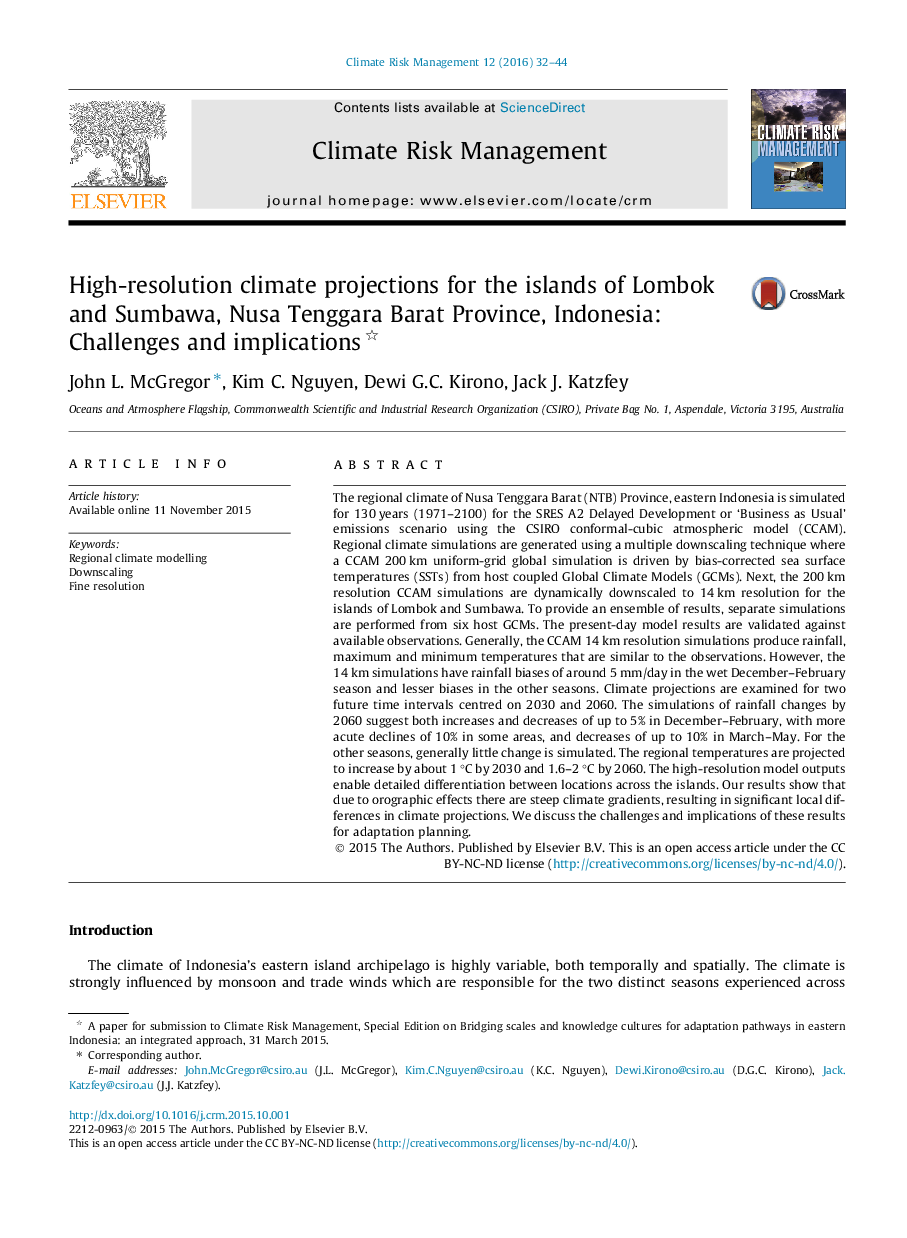| کد مقاله | کد نشریه | سال انتشار | مقاله انگلیسی | نسخه تمام متن |
|---|---|---|---|---|
| 1051193 | 1484880 | 2016 | 13 صفحه PDF | دانلود رایگان |
The regional climate of Nusa Tenggara Barat (NTB) Province, eastern Indonesia is simulated for 130 years (1971–2100) for the SRES A2 Delayed Development or ‘Business as Usual’ emissions scenario using the CSIRO conformal-cubic atmospheric model (CCAM). Regional climate simulations are generated using a multiple downscaling technique where a CCAM 200 km uniform-grid global simulation is driven by bias-corrected sea surface temperatures (SSTs) from host coupled Global Climate Models (GCMs). Next, the 200 km resolution CCAM simulations are dynamically downscaled to 14 km resolution for the islands of Lombok and Sumbawa. To provide an ensemble of results, separate simulations are performed from six host GCMs. The present-day model results are validated against available observations. Generally, the CCAM 14 km resolution simulations produce rainfall, maximum and minimum temperatures that are similar to the observations. However, the 14 km simulations have rainfall biases of around 5 mm/day in the wet December–February season and lesser biases in the other seasons. Climate projections are examined for two future time intervals centred on 2030 and 2060. The simulations of rainfall changes by 2060 suggest both increases and decreases of up to 5% in December–February, with more acute declines of 10% in some areas, and decreases of up to 10% in March–May. For the other seasons, generally little change is simulated. The regional temperatures are projected to increase by about 1 °C by 2030 and 1.6–2 °C by 2060. The high-resolution model outputs enable detailed differentiation between locations across the islands. Our results show that due to orographic effects there are steep climate gradients, resulting in significant local differences in climate projections. We discuss the challenges and implications of these results for adaptation planning.
Journal: Climate Risk Management - Volume 12, 2016, Pages 32–44
